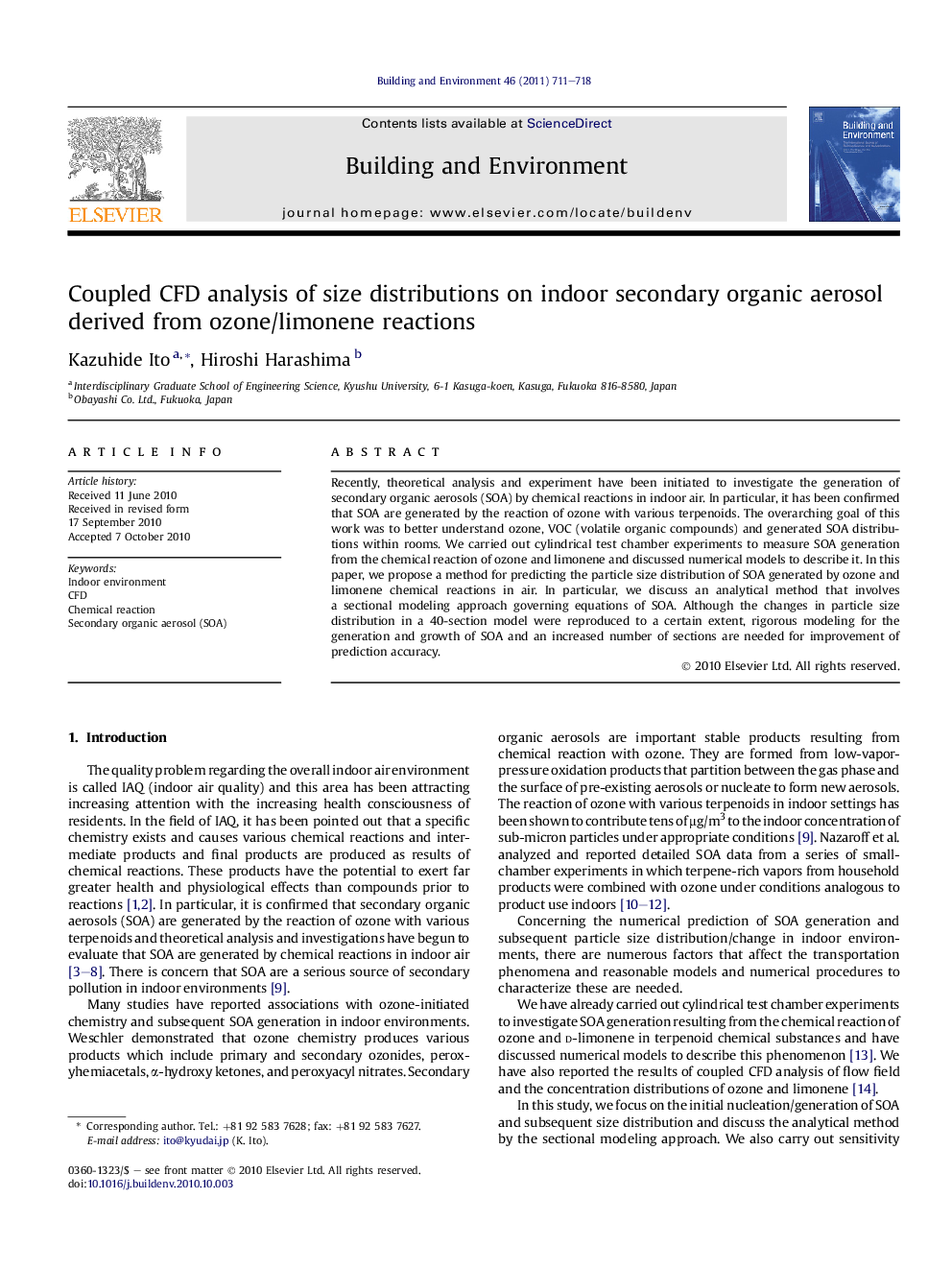| Article ID | Journal | Published Year | Pages | File Type |
|---|---|---|---|---|
| 248981 | Building and Environment | 2011 | 8 Pages |
Recently, theoretical analysis and experiment have been initiated to investigate the generation of secondary organic aerosols (SOA) by chemical reactions in indoor air. In particular, it has been confirmed that SOA are generated by the reaction of ozone with various terpenoids. The overarching goal of this work was to better understand ozone, VOC (volatile organic compounds) and generated SOA distributions within rooms. We carried out cylindrical test chamber experiments to measure SOA generation from the chemical reaction of ozone and limonene and discussed numerical models to describe it. In this paper, we propose a method for predicting the particle size distribution of SOA generated by ozone and limonene chemical reactions in air. In particular, we discuss an analytical method that involves a sectional modeling approach governing equations of SOA. Although the changes in particle size distribution in a 40-section model were reproduced to a certain extent, rigorous modeling for the generation and growth of SOA and an increased number of sections are needed for improvement of prediction accuracy.
